BURLINGTON, ON. January 16, 2013 While the part of Lakeshore Road that has the heavy traffic, and on which the city wants to paint lanes for exclusive bicycle use, is not in Ward 1, Councillor Craven assured a Workshop talking about how to better engage the community, – that there will be letters galore on how stupid an idea bike lanes on Lakeshore is. A view we must add which the Councillor does not share.
The different views on bike lanes on Lakeshore Road got trotted out at a four-hour meeting Monday evening at which council heard 12 delegations that basically broke into two camps – those who believe fervently that we will be healthier and the environment will survive if we can get cars off the road and those that believe they have the right to make left hand turns off Lakeshore into their driveways.
Issues like this are the bane of every politician – they can’t win. At least half of their constituents are going to be unhappy. This is the time when the politicians have to rise above their local interests and go for the better good. And on Monday night – they, for the most part, did just that.
It would have been one of those 4-3 votes that used to plague Burlington but with Councillor Taylor away it came in at 4-2 with Councillors Meed Ward and Sharman voting against the six to nine month pilot project city staff has proposed.
While there were solid arguments from intelligent people on both sides what was evident was the split in thinking. Great idea said Councillor Meed Ward – just not on Lakeshore Road,
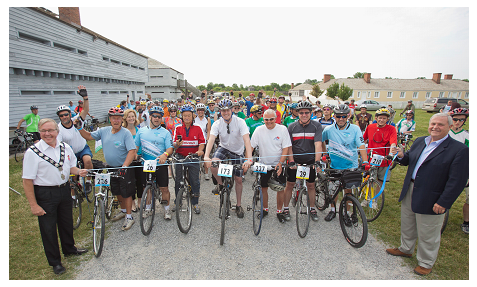
Ward 4 Councillor Jack Dennison, the only one without a helmet, doesn’t that tell you something, is an avid cyclist who has put his money where his mouth is. His popularity will be tested when the lines get painted on Lakeshore Road.
Jack Dennison, who lives on Lakeshore Road and is the Councillor for that part of the city explained very carefully that this was just a pilot project, but the intention is to eventually provide bike lanes for the full length of Lakeshore Road – from the canal on the west end all the way to the Oakville border.
The cyclists and the environmentalists believe the time has come to take serious steps to lessen car use and Monday evening they got past the first hurdle. Council committee instructed the Director of Transportation Services to conduct a trial re-marking of Lakeshore Road between east of Seneca Avenue and Guelph Line to provide on the road bike lanes and to report back to Council in the Spring of 2014 on the results of the pilot.
There are some complications in that the Region is digging up part of the road and exactly when that work will be completed isn’t certain. When you dig a hole in the ground to get at a water pipe – you never know what you are going to run up against – so timing gets a little iffy.
Some of the residents along Lakeshore brought good arguments to the table – but nothing they said was reason enough not to do a pilot. Right now all we have are a lot of strong feelings on both sides. Some data will help.
The city ran into the same problem when it put in the bicycle lanes on Walkers Line and Appleby Line south of New Street. The world was going to end – but it didn’t. There haven’t been any problems – however, there hasn’t been a huge increase in bicycle use along those stretches of road either.
Does it need more time for the city to know if the Appleby and Walkers bike lanes were a good idea that is being used by citizens? Probably too early to tell and it will take some time to learn if the volume of traffic on Lakeshore Road can accommodate bike lanes on the north and south side of the road, and if it is truly safe as well?
The cyclists believe it can be made safe while the people who live along the road or adjacent to it can only see long lines of cars backed up while someone waits to make the left hand turn into the street they live on or their driveway.
Jim Barnett, who lives on Shoreacres said that he has faced occasions where he has had to wait for more than five minutes before there was a chance to gun his engine and slip across the oncoming traffic. Dr. Margarett Ackerman spoke for herself and a number of residents and said that it was always very difficult to make the left hand turn into her hone when she was returning from the Joseph Brant Memorial Hospital where she is an emergency surgeon and told of a situation when an obstetrician was not able to get to the hospital on time to handle a delivery.
Mention was made of back-ups that are 50 cars in length that sit waiting for the person at the front of the line to be able to make that left hand turn.
There were exaggerations all over the place. Ken Love, the first person to speak spoke of the damage that cars do to our individual health and the environment; but what he had to say and his bombastic approach was so far over the top that he didn’t do much to advance the argument for adding bike lanes anywhere in the city.

One of the few occasions you will see Councillor Meed Ward or Mayor Goldring on a bike. Councillor Dennison bikes, roller blades – big on physical stuff. Photo op promoting the two Car Free Sundays Burlington held in 2012
Councillor Sharman spoke of his concern for some of his elderly residents in Ward 5, who might die while in an ambulance that got tied up in traffic.
Meed Ward said bike lanes were a good idea – just not on Lakeshore Road. New Street or Fairview was her choice for bike lanes. Meed Ward does not use a bicycle.
It was hard to tell, while listening to the delegations, which way this council was going to vote. The Mayor will usually always side with the environmentalists – but you only see him on a bike during a photo-op.
Councillor Craven surprised us when he voted for the pilot project as did Councillor Lancaster when she voted to try it. Lancaster tends to identify with the hard-core Tory crowd along the Lakeshore and doesn’t usually go out on a limb. Her vote was the one that made the difference. Councillor Taylor was not able to attend the council committee but made it known that he did not support the pilot.
Dennison, a very active cyclist, takes the view that car drivers do not own the road – the road is there to be shared by cyclists and car drivers.
The bicycle crowd put forward some pretty solid data and they brought forward enough good argument to make the trial worth talking a chance on.
The issue for the cyclists is “quality of life”. They know that Burlington is not going to be like our sister city Apeldoorn, in Holland, where a very large part of the population does not use or own a vehicle – Apeldoorn is basically the same size as Burlington and about as far away from Amsterdam as we are from Toronto.
The Dutch will be in Burlington sometime in the not too distant future to open up a commemorative park – might be a good idea to put them all on bicycles and listen to what they have to say about bicycle use in a municipal setting.
The cyclists believe that if you build it they will come. Which is just what the Lakeshore resident fear – that the cyclists will come and muck up the flow of traffic, making it worse than it is now.
“If you add bike lanes more people bike; cyclists go out of their way to use bike lanes.” That kind of statement sends shudders along the spines of those who live along the Lakeshore.
“We are all much healthier if we bike and get the exercise we need,” say the cyclists. “We agree” say the Lakeshore residents “and the city has all kinds of bike trails where you can do just that”.

Who uses a bike in Burlington? There are the Strong and fearless (1%) – you see them on the road in the middle of winter. There are the enthused and confident; people who use their bikes frequently and would like to use them more – 5-10% of the cycle crowd. Then there are the no way, no how people, you will never see them on a bike, they make up 30% of the demographic. It is the 60% who are interested in using a bike but concerned about their personal safety. This is the target market and these are the people the cycling committees want to see on Lakeshore Road.
The bike people want less hysteria, more facts and measurements. They would like to see the left hand delays measured; they want to know just how many bike car accidents there have been as well. During the Council committee the audience was told that there had been four accidents involving bikes over the last four years in the stretch of the road where the pilot is to take place.
Councillor Sharman, who is strong on data, gave Vito Tolone, one of the city’s traffic experts, a very tough time over the lack of data. Tolone didn’t deserve the punching around he got; there was no need to manage him quite as aggressively. It’s an approach Sharman chooses frequently – one hopes that when the data is available he will make good use of it and not exploit it shamelessly to convince his constituents that he is doing a good job on their on their behalf.
Lakeshore Road is between 9.6 and 9.75 metres wide from Seneca to Guelph Line. It widens to more than 10 metres east of Guelph.
The pilot plan is to reconfigure the road and mark it so that there is a bike lane on each side that will measure 1.3 metres in width. There will be two traffic lanes 3 metres in width. These two traffic lanes will be separated by a lane – NOT a turning lane – that will be between 1 and 1.15 metres wide. It is a lane that cars can edge into when they want to make a left hand turn.
Can it work? We won’t know until we try. Will traffic still back up? Of course, we’ve done nothing to decrease the amount of traffic on the road. That’s a traffic engineering problem; a traffic management task – bicycles are not going to make a difference to the number of cars on the road. The proposed plan will reduce that turning lane and that might result in a line of cars building up behind the car that is trying to make the left hand turn. If the turning lane were made 5 metres wide – it still would not change the volume of traffic nor would it allow cars to make left hand turns any faster.
Those arguing against the creation of dedicated bicycle lanes are not looking at the bigger picture – which is to reduce the number of cars on the road.
The bicycle people argue that the world has changed in 20 years and that the youth of today are not jumping into cars the way previous generations did. They point to a study that has younger people not buying cars and that demand will be down by 2 million units a year.
They point to data that has the percentage of 20-to-24-year-olds with driver’s licenses at 92 % in 1983 but currently at 81%; that could well be because this demographic can’t get jobs and have too much student debt to manage –but the fact appears to be that there are more younger people who have chosen not to drive a car.
The right decision, say the cyclists, is to widen Lakeshore Road – that option has a $9 + million price tag attached to it – which is half what the pier is going to cost us.
The next best, from the cyclists point of view, is to add segregated bike lanes to the existing road.
Burlington created two Car Free Sundays last year. The one on Appleby Line was successful but the one on Brant Street was close to a disaster.
Nevertheless, there is a core commitment on the part of this city council to get more people on their bikes. The pilot made it past the council committee stage. Council member phones will be ringing; the emails will flood the in boxes of every council member. Will they stand their ground or will they buckle – they are politicians. The ones to watch are the Mayor and Councillor Lancaster. We just may see what they are really made of.
Why is traffic on Lakeshore such a mess? Where do the cars come from and is there anything that can be done to divert traffic? If one wonders what traffic on the QEW is like all you have to do is check out the flow along Lakeshore. When the QEW is basically “stop and go” in spurts at that – traffic will cut south to Lakeshore where there is at least some movement. Is there some way to keep the traffic on the QEW and prevent it from drifting south the Lakeshore? That’s something traffic engineers have to work out.

Concrete poured when the road was upgraded in the mid ’30’s. Known then as The King’s Highway it was THE route from Toronto to Niagara Falls.
Lakeshore Road was originally known as the King’s Highway – Hwy #2 to many people. Construction began in 1917. In the mid 30’s the road went through a significant re-build. It is now a nice easy road through perhaps 50 communities between Windsor and Gananoque.
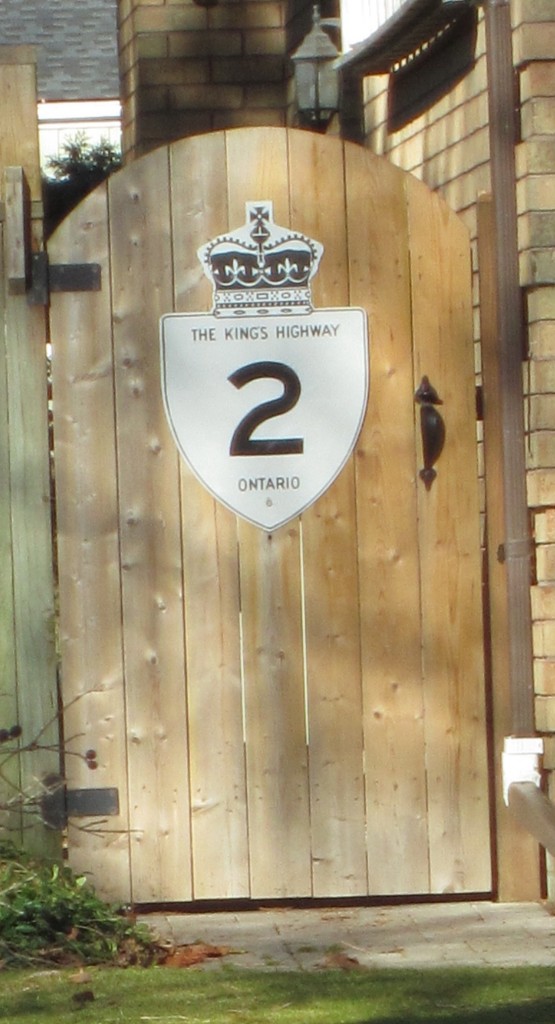
The old Highway name is now a decorative item for one of the homes along Lakeshore Road. What it becomes in the next 25 years will be at least as interesting as the last 25 years.
It’s no longer a major highway. It many small towns it runs along the main street; in places like Burlington it is a road that could, if we let it meander along the edge of the lake where some magnificent homes have been built. It’s a wonderful drive through smaller, picturesque communities. We seem to have forgotten that in Burlington and see it as a road we should be able to zip along and at the same time treat as a street where we can turn into our driveway and not have to wait more than 10 seconds.
Change does not come about easily. For years most of us smoked; for years many of us never used the seat belt and for the longest time we felt it was OK to “have one for the road” and got behind the wheel of our cars when we really weren’t able to drive safely.
Times changed. Gas was cheap, we lived in sprawling suburbs where a car was vital – and they were fun to drive. You came of age when you had a car and the open road was all yours.
Now we are aging. For many that are in their 60’s their night-time vision isn’t what it used to be. Most of us know that there will come a time when our family doctors will have to tell the government we should not have a license. But we will be able to ride our bicycles for those small errands –and city council wants to have those safe cycle paths or lanes in place for that close upon us aging society to use.
Rob Narejko spoke to the Council committee as Chair of the Cycling Committee and said the information he was using was factual, with references to studies from accredited universities, government agencies who specialize in health and transportation. “You know my delegations are generally short and to the point”, said Narejko, “I regret, for both of us,” he added “that today’s delegation is much longer.”
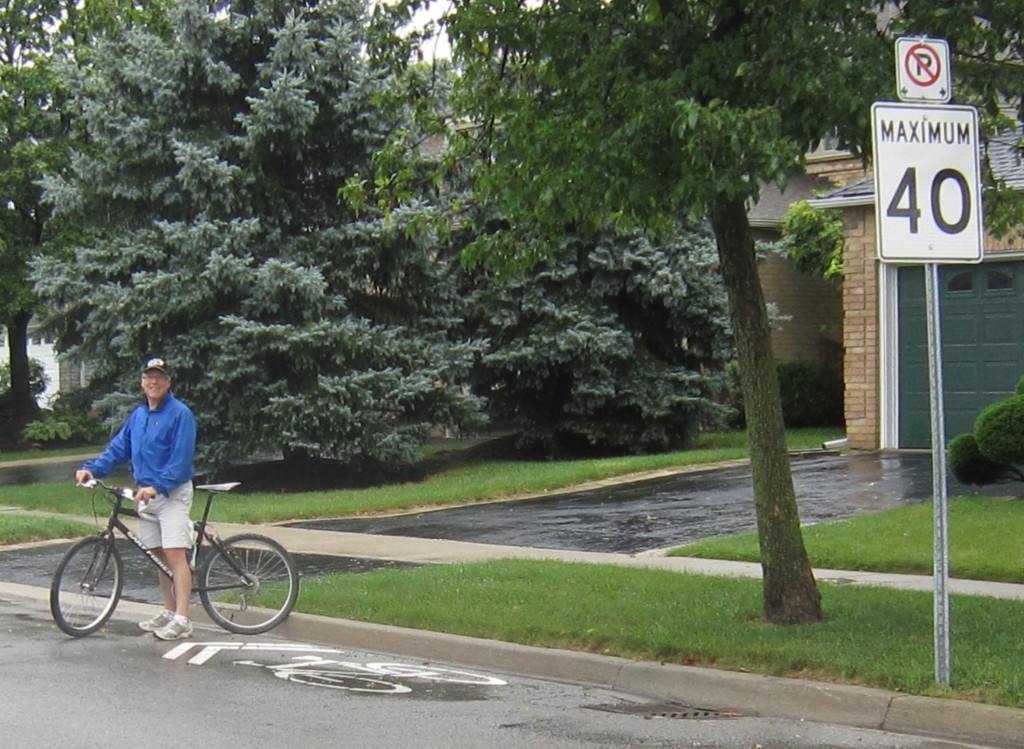
For Rob Narejko – this is the only way to go – slow speeds and roads with bike lanes. It is what he considers a quality life style. He drives a car as well.
To put his remarks in context Narejko mentioned the value of strategy for continued viability of the City, the value of an active lifestyle and the value of the lines on the road.
“Nothing fails like success”, a quote attributed to many people and used by Narejko to show people have become comfortable with the way life is now. “They forget the work and tough decisions that got the city to where it is now and become complacent. The city gets stagnant, unable to attract business investment. Taxes rise, residents become disgruntled and before long, a once prosperous city is in decline” said Narejko.
Many people believe Burlington is a success. In this snapshot in time, it definitely is. But there are signs that show we are not keeping up.
Narejko pointed out that “Cars are a significant part of our city because we have designed our cities around the car. Cars are definitely needed as a method of transportation, due to the design of the city; just under 80% of people use their car for their daily trip to work.”
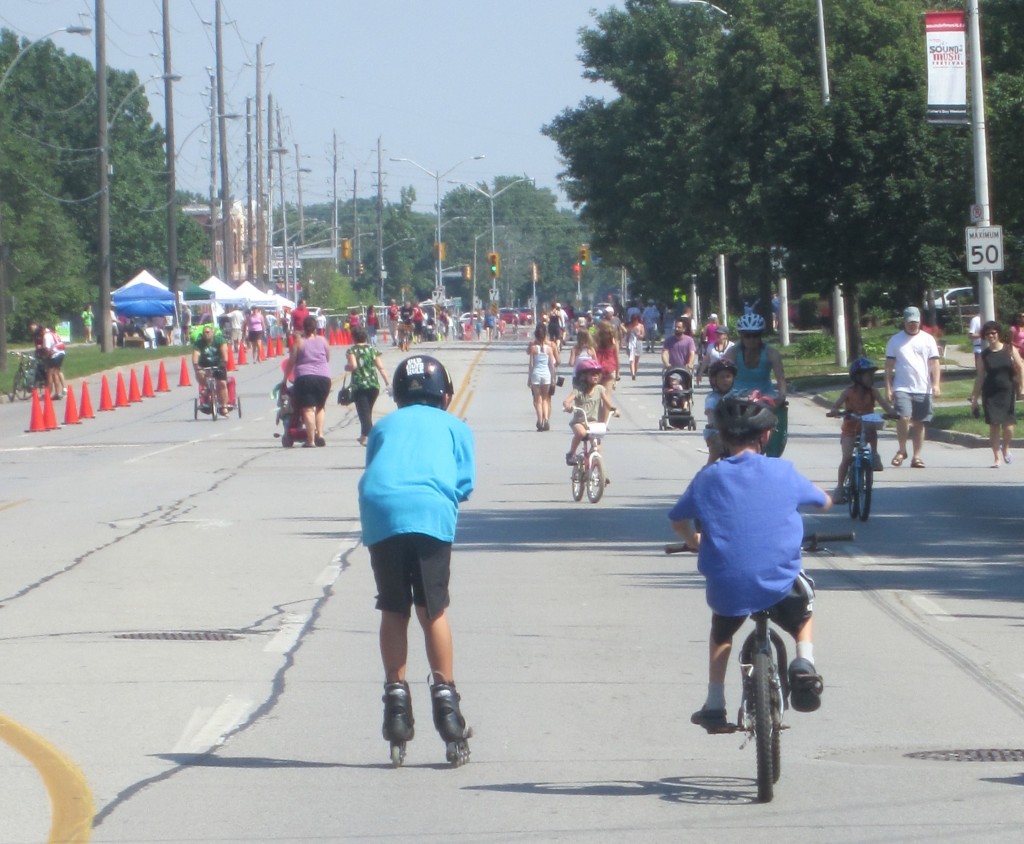
If it’s about “quality of life” this is probably what they are talking about. The Car Free Sunday on Appleby Line south of Fairview. One part of the city’s longer range project to get people using their bikes.
“A city is about people: says Narejko. “People make the city work, not cars. Bikes, walking, public areas, green spaces are about people. It takes a crisis for most people to adopt change. Smart leaders don’t wait for a crisis. They create a vibrant plan for the future, through consultation with experts and the general public and then they carry through on that plan. If you don’t act on the plan, why go through the effort of creating them, taking up people’s time, spending money on experts and then shelving the reports? Do you want to be known as Councillors who kick the can down the road for the next Council to deal with when we are deep in trouble? Or do you want to be known as leaders who guided the City to the next level?
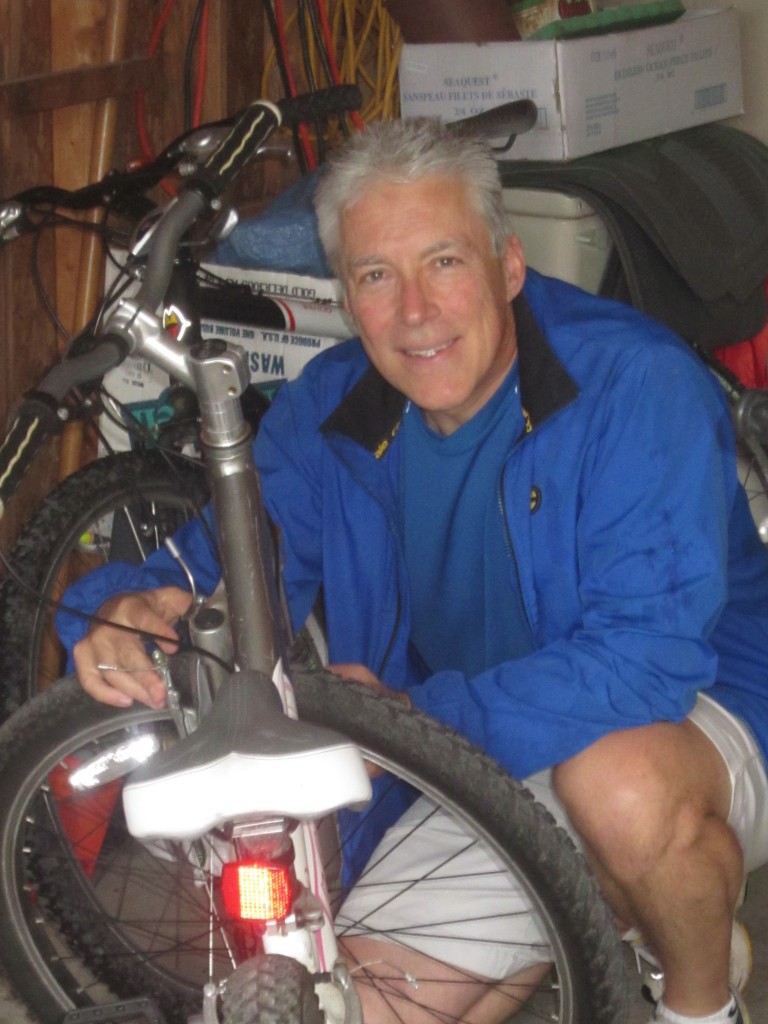
Rob Narejko, Chair of the City’s Cycling Committee rides a bike, a motorcycle and drives a car. Does he ever take the bus?
Rob Narejko maintains that Council was not elected to maintain the status quo. He isn’t going to get the level of agreement he expects with that argument – there are many, perhaps most people, in Burlington who are quite happy with the way things are – and they don’t want much in the way of change.
“Look at this issue” implores Narejko: “look at Guelph Line, Brant St, Walkers’ Line, Appleby line where changes were made: It is amazing to me how much people complain about minimal, positive change prior to it coming and then where do they go afterwards? Not a peep.”
“Has there been any negative feedback from any of the Guelph, Walker’s or Appleby projects? To my knowledge, gathered from City staff, no there have not.”
One of the dumber ideas Narejko suggested was that if traffic commute time is a priority on Lakeshore Road, then the city should pass a by-law that would permit only cars that belong to, and are driven by Lakeshore residents between the hours of 5:00 and 6:00 PM, Monday to Fridays. Narejko, who normally has useful argument, might want to pull that one.
Cycling, Narejko pointed out, is an accepted, legal and critical mode of transportation in all cities in all countries around the globe. He added that he could hear the nay-sayers piping up with: ‘yes, but not in Burlington’
Narejko and his colleagues point out that there are strategies developed by expert and rigorous processes to guide thinking at all levels of government which Burlington Council seems to ignore. There are five provincial initiatives (Places to Grow, Big Move, Strategic Cycling Plan (draft), Healthy Eating Active Living, Complete Streets) either in place or being developed as well as two Regional initiatives (Active Transportation Master Plan (under way), Active Halton) and then the city’s Cycling Master Plan and the Strategic Plan.
“It is very frustrating as an invested citizen in this community” said Narejko, “to have to fight for what should logically be done based on strategies and advice already in place.”
This initiative did get past a Council committee – all it has to do now is get through Council at the end of the month – without another dozen delegations please, and let’s get on with the six to nine month trial and see what the data tells us.
But it isn’t going to be quite that easy – is it?















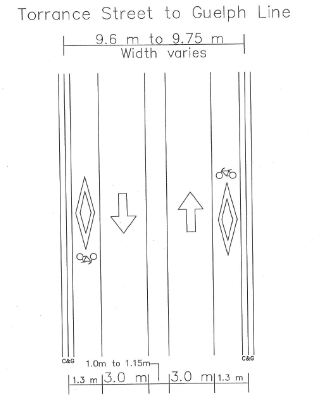



I liken the task of trying to get Burlingtonians to accept the idea of reducing auto-dependency and enabling other forms of travel as similar to getting my kids to eat vegetables. No matter how much evidence there is that veggies are good for them, they want no part of it.
There will always be those who throw tantrums and hold their breaths until they turn blue. There will also be those who actually decide to have a taste and decide that it’s really not so bad.
Contrary to popular opinion, the people in Europe are the same species as we are. They have just made different choices about how to prioritize the use of the limited space available for transportation. We would do well to learn best practices from them, as well as others (e.g. Portland, New York, Minneapolis, Chicago, etc…) who have already made these changes.
There are 150,000 citizens in Burlington. If 400 people do not want this trial do that mean 144,600 are fine with it?
Everyone benefits from cleaner air, less congestion.
Why would any resident or business want to locate to a city where to air is filthy and it takes 5 minutes to drive 2 KM?
It all depends on the point of view. My interpretation of these figures is that 144,600 residents are happy with the existing road markings and did not feel it necessary to comment. BTW, Chris, do you live anywhere close to the part of Lakeshore that is affected?
Great article.
Far more than half the constituents wont be happy.
How many 2 car garages does Appledorn have?
How many inches of snow in a year in Appledorn?
Reducing smoking and using seat belts save lives. The proposal increases polution shortening lives, and will create more accidents with potential of loss of life.
Robin Petty comments
“1) bike lanes will NOT get people out of their cars, improvements to Burlington Transit routes could do that, however, and 2) the bike lanes on Appleby and Walkers have been fabulous for calming traffic south of New St. but for using them to ride a bike? I’ve tried a few times and they end .5k before the lovely East/West path that people actually DO use. I suggest we take the $40,000 that this pilot would cost and use it to extend the Appleby and Walkers paths so people can ride to safety.”
Reply to this email to comment on this link.
Walkers and Appleby are currently believed to be too narrow to do this. One of the thing that this pilot project may show us is that we can have narrower lanes on roads and be just as save. We can then do that on other roads. Road widening costs millions per kilometre. Road repainting cost 10’s of thousands per kilometre. Trying to repaint sound like better use of tax dollars.
I would gladly support adding more bike lanes on Walkers and Appleby.
For all those healthy riders, if bike lanes slow drivers down, what does this do for drivers stress levels and overall health? Five minutes each way on a daily commute is a substantial amount of time on a 20 minutes (one way) drive to work or to shop downtown. Bicycles could be killing drivers.
I if takes you 5 minutes to drive two KM it would be faster to ride your bicycle.